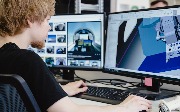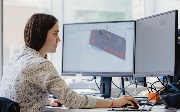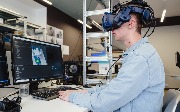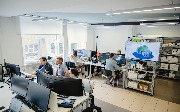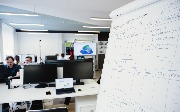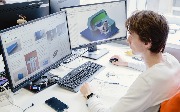MAI “Avionics” Center: glimpse into the future of the aviation systems
Moscow Aviation Institute is one of the largest Russian high-tech universities. Its scientific research and educational programs are aimed at creating innovative solutions and future competencies in prospective areas of scientific and technological development. MAI has laboratories and centers of excellence in such topical high-tech areas as unmanned aerial vehicles, engineering systems electrification, composite materials and structures, small spacecraft, mathematical modeling, IT, artificial intelligence, etc.
Centers of excellence are important points of interaction between the university and the industry and perform three key functions: conducting research projects together with the leaders of the high-tech market; generation of new competitive technologies, competencies and approaches; development of talents for the industry and MAI.At the end of 2020 a new “Avionics” Center appeared at Moscow Aviation Institute, where the engineers with profound experience in large aviation companies work together with the students of Moscow Aviation Institute. The center’s activities are aimed at the development of advanced avionics equipment, primarily for aviation, and the development of students’ competencies in avionics. The importance of such division for the industry is undeniable: every year avionics makes up the increasing share of aviation complexes, and the demand for work in the design and testing of airborne equipment continues to grow steadily.The center has recently completed work on a stand designed to solve the following tasks: on-board software development, loading it into on-board computing devices, conducting incoming control etc. The stand was designed and developed for Ural Works of Civil Aviation and is now undergoing certification by the certification authorities.
The project became the first one that was implemented for the external customer. The negotiations on cooperation with the Regional Aircraft branch of the Irkut Corporation are being now underway, as well as with other large enterprises of the industry.
Another interesting project of the center is the concept of a supersonic passenger aircraft cockpit.The main peculiarity of the new cockpit is that it is designed not for two, but only one single pilot. It is supposed that an ‘electronic controller” – the software module that would be able to analyze the adequacy of human actions – as the “co-pilot” would be added. At the same time, the single-seat cockpit will noticeably improve the aerodynamics of such a specific machine as a supersonic aircraft.
The innovative solutions also affected the principles of the aircraft control.
The pilot as a rule controls the aircraft with his right hand and the engines with his left. In the new cockpit it is going to be vice versa. This principle has already been partially implemented on Airbus commercial aircraft, where the control sidestick is on the left for the pilot-in-command, and on the right for the co-pilot. The concept assumes that with a less loaded right hand, the pilot will be able to perform operations necessary during the flight more comfortably: to enter data, control additional equipment, etc.
Finally, the cockpit is equipped with unique indication system, which is necessary for piloting with the aircraft's bow not tilted. The pilot will receive all information about the flight by means of instruments; direct vision of the space in front of the aircraft is not provided. The similar principle was used on the supersonic passenger Tu-144 aircraft and “Concorde” – but only at the echelon. Now it is proposed to solve the problem of visual contact of the pilot with the ground, including during the takeoff and landing, via using technical vision equipment. This will provide significant advantage as far as the simplification of the aircraft design is concerned.
The cockpit model will be one of the developments that Moscow Aviation Institute will present at the International Aviation and Space Salon (MAKS) on July 20-25, 2021.
